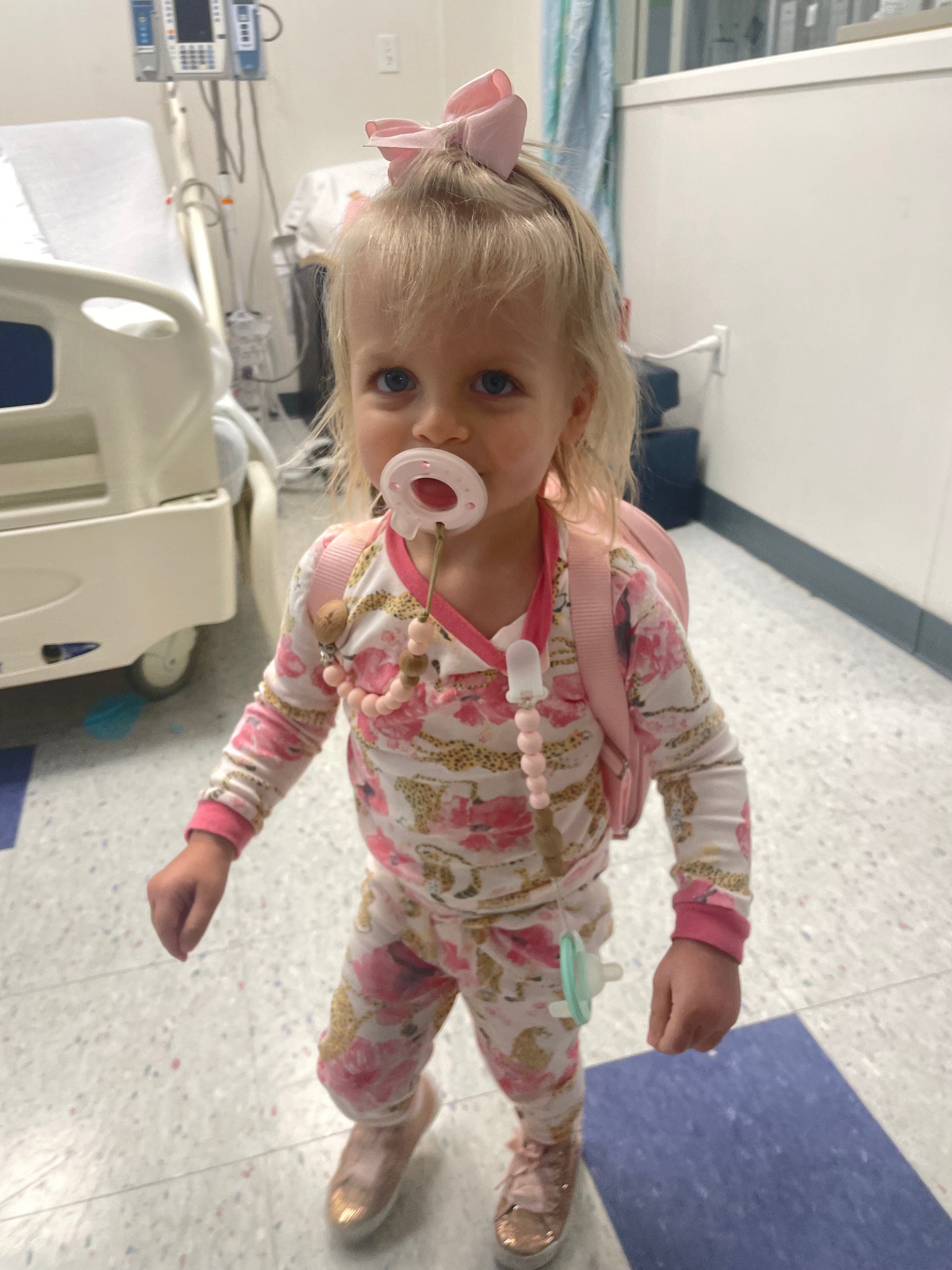
When baby Annie’s teeth first appeared, her mom noticed one front tooth protruding outward.
The culprit?
None other than the traditional pacifier she’d been using, says now 2-year-old Annie’s mother, Lauren Anderson.
Anderson, who is founder and owner of the Tiny Tracker newborn tracker, memory book and development guide for parents, checked with Annie’s pediatrician. She also talked with her own father and brother, both of whom are dentists.
Anderson learned that traditional pacifiers may contribute to oral and tooth development issues that sometimes appear during the toddler years. That’s when she switched Annie to the Ninni pacifier.
The result?

Within one month, Anderson noticed Annie’s front tooth reversing and appearing less protruded. Now, her daughter keeps two Ninni pacifiers with her at all times.
While the Ninni is well-known as a big help for breastfeeding infants, Anderson’s story shows that it can also promote oral and tooth development through the toddler years.
Let’s take a closer look at how teeth develop in early childhood, how pacifiers may affect oral development and how the Ninni can be a part of your child’s oral health.
Tooth Development in Early Childhood
Believe it or not, tooth development begins in the womb.
Baby’s teeth begin forming just 6 weeks after conception, and the hard tissue surrounding the teeth develops at 3 to 4 months gestation. Expecting moms can promote healthy teeth during pregnancy by getting essential nutrients like calcium, vitamin D, vitamin C and phosphorus.
After baby is born, primary teeth begin to appear at 6 to 12 months of age, and most will have appeared by 33 months. A total of 20 primary teeth will appear. Teeth typically erupt a little earlier in girls than in boys.
Children begin losing their primary teeth around 6 years of age, and the last primary tooth is lost around age 12. Primary teeth will be replaced by a total of 32 adult teeth.
Pacifier Weaning & Tooth Development
Before switching to the Ninni, Anderson says her daughter mainly used her old pacifier as a crutch to help her sleep.
Now, the Ninni is Annie’s preferred soothing mechanism. Self-soothing is one of the most important functions of a pacifier. It helps baby relax when not being held by a parent or caregiver. This lets mom or dad take a break and tend to other tasks.
“It keeps her active and calms her down,” Anderson notes.
Pacifiers & Tooth Development
Because the Ninni doesn’t damage her teeth like the old pacifier did, Annie can have it 24 hours a day.
Some traditional pacifiers may promote a misaligned bite, crossbite, open bite and other malocclusions. The risk is greater in older kids who continue to use pacifiers. The American Academy of Pediatrics cautions that pacifier use beyond 24 months may cause tooth issues, but these are often reversible once the child stops using it.
In young infants, the Ninni activates the same muscles and oral movements as those used for breastfeeding. Baby’s tongue makes a “wormlike” motion to keep it in place. Those same movements, along with its unique breastlike shape, make the Ninni a good choice for promoting healthy tooth development in older infants and toddlers.
Pacifier Weaning
After Annie’s pediatrician recommended weaning from her traditional pacifier at about 12 months of age, Anderson says her daughter had some trouble at first. Switching to the Ninni has helped ease the process.
One thing Anderson noticed was that the Ninni falls out when the child stops sucking, such as when she fall asleep. Annie has a strong suck reflex, which keeps the Ninni in place while awake. Anderson says this has “eliminated the power struggle” that sometimes occurs when a child is transitioning off of the pacifier.
A handy pacifier clip keeps the Ninni from falling to the floor when Annie stops sucking on it.
More Benefits of the Ninni Pacifier
The first few nights with the Ninni were a bit of a “learning curve,” according to Anderson, but now that Annie has adapted “it’s Ninni or nothing.”
Based on her family’s experience, Anderson recommends a week of consistent use to allow children to adapt to the Ninni. After a few days most infants will get the hang of it.
Now Annie has two Ninni pacifiers – usually one in her mouth and the other in her hand. When the family is out and about, the pacifier clip keeps Annie from dropping it.
Anderson describes the Ninni as “buttery soft” which provides extra comfort when a child uses it. She advises parents to check for bite marks or holes when using it after baby’s teeth appear. So far, she says, Annie has not made any holes in her Ninni.
Other Tips for Healthy Teeth in Babies & Toddlers
Oral care begins at birth, and the risk of tooth decay begins the moment baby’s first tooth erupts. Parents must get baby accustomed to having a clean mouth from the very start. Use a clean, damp washcloth to clean the gums at least twice a day, especially after a nighttime feeding.
As soon as the first tooth appears, use an infant-sized toothbrush with soft bristles and a small head. Apply a rice-sized amount of fluoride toothpaste and brush the front and back of baby’s teeth, as well as at the gum line. Brush in the morning and at bedtime until your child is old enough to brush independently.
Finally, here are a few more tips for reducing your child’s risk of tooth decay:
- Never put baby to sleep with a bottle filled with sugary drinks, such as juice or sweetened soda.
- Parents and caregivers should never test bottled milk or formula in their mouths. This avoids passing mouth bacteria to baby through saliva.
- If baby has sore gums from teething, a few ways to provide relief include a wet washcloth, cool spoon or teething ring.
- Baby’s first dental visit should take place by age 1. The dentist will check for proper oral development and signs of tooth decay.



